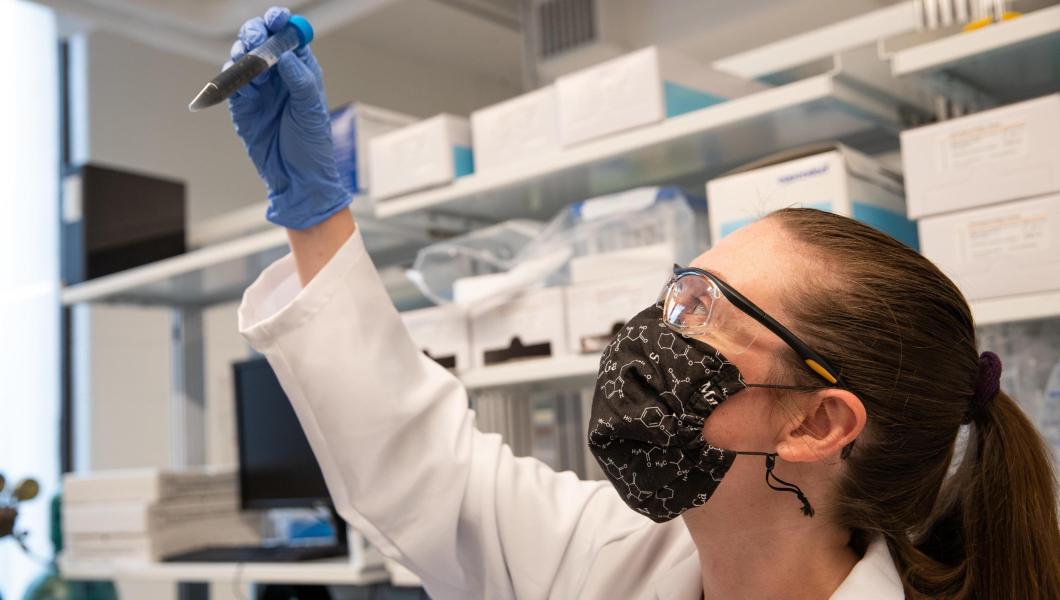What the Ocean Says — Research for National Defense, Environmental Insight

Since coming to NJIT in 1994, Professor Eliza Michalopoulou has been listening to the world’s oceans, researching how new knowledge about sound propagation in the marine environment can enhance the U.S. Navy’s antisubmarine defenses. But the analytical tools she uses have other applications as well, including the potential to yield greater understanding of oceanic pollution patterns and climate change.
A Good Match
Michalopoulou is an engineer, specifically an electrical engineer, with an appointment in the Department of Mathematical Sciences. The focus of her computationally intensive graduate work at Duke University was signal processing and ocean acoustics, and she explains that this background was very compatible with a postdoctoral position available at NJIT. “The postdoc involved working with a member of the math department who had a project that combined signal processing, mathematical modeling and ocean acoustics, she says. “It was a very good match.”

Over the years, Michalopoulou has received significant funding from the Office of Naval Research (ONR). Using data from the ONR and other sources, to which she applies analytical techniques such as matched field processing and inversion analysis, she has developed algorithms for improving detection technology. It’s work especially relevant to detection in shallow water.
Producing the mathematical tools the Navy needs requires factoring in many sound-propagation parameters. These include water temperature, the number of times sound waves bounce between the surface of the ocean and the earth below, the slope of the ocean floor, and its subsurface geologic profile. It’s also necessary to factor in the identifying characteristics of a sound source — sea life or submarine — and the noises of civilization emanating from shore and nearby surface vessels.
While Michalopoulou’s research has yielded significant practical results, there is still much to be learned and questions to be answered. “For example, one uncertainty is determining how the exact composition of the ocean floor, which might be sand, clay or rock, affects the speed at which sound propagates and consequently how accurately we can localize the origin of a sound,” she says.
In addition to refining algorithms to account for natural variables, another complexity stems from the decreasing size of submersibles, which can even be diminutive autonomous vehicles, and technology that allows for ever more quiet operation. “We need to come up with better methods for distinguishing increasingly weaker signals of interest from noise, such as that from vessels on the surface. That’s a big challenge.”
Currents of Change
In discussing the broader potential of investigating ocean acoustics, Michalopoulou notes the utility of such analysis for addressing other issues of major concern for the global community. Although she is not directly engaged in researching these issues at present, she explains that the computational tools used to monitor the activity of submarines can also yield valuable information about oceanic pollution and climate change.
Sound propagation can be affected by the ocean’s chemical composition. Therefore, acoustic analysis can signal changes in the composition of water in a particular area, possibly as a result of the presence of harmful contaminants.
Detecting and localizing sound from an oceanic source must also allow for the influence of temperature. In general, the warmer the water, the faster sound will travel between a source and a detector. Like the chemical composition of water, data about seasonal variations in temperature need to be considered in her antisubmarine research for the Navy.
In 2016, Michalopoulou continues to be very much focused on ocean acoustics. However, in keeping with the interdisciplinary collaboration that has moved to the forefront of NJIT’s strategic planning in recent years, she has contributed her computational and signal-processing knowledge to a wider range of projects. One involved working with colleagues in physics and chemical engineering to develop the signal-processing capability needed for rapid detection of an explosive substance.
“I’ve learned to broaden my research,” Michalopoulou says. “Working with colleagues in other areas stimulates creative thinking about my own work, how the tools that I work on can be applied in new ways.”
Michalopoulou also sees continuing change — positive change — with respect to the presence of women in science and engineering. Throughout her career at NJIT, she has actively encouraged women to pursue education and work in STEM professions. She has served on the Committee on Women’s Issues of NJIT’s Murray Center for Women in Technology and has co-chaired the Committee on Women in Acoustics of the Acoustical Society of America.
Yet in Michalopoulou’s estimation our culture still does not offer women the same degree of support as males when it comes to making the educational choices and developing the abilities needed for success as a scientist or engineer. It’s encouragement that not only needs to increase on the part of parents and teachers, she says, but it should begin at the earliest appropriate age.
By Dean Maskevich

